THE opening of the new Royal Adelaide Hospital may mark a turning point in the modernisation of the South Australian health system.
But the $2.3 billion state-of-the-art new Royal Adelaide Hospital is not the only record investment the State Government has made.
South Australia’s local hospitals received a $1.1 billion boost in this year’s State Budget as the Government looks to prioritise health spending. The cash injection will include upgrades to Flinders, The Queen Elizabeth, Lyell McEwin, Women’s and Children’s and Modbury hospitals.
The spending commitment adds to previous funding allocated to the ambulance services and hospitals, including in Noarlunga. It is hoped to increase emergency capacity, reduce waiting times in emergency departments and create more services closer to home. Health Minister Jack Snelling said the Government’s plan involved creating centres of excellence across the hospital network. The boost comes as the Government largely brings to an end its controversial reform agenda, known as Transforming Health.
Hello, baby: Women’s and Children’s Hospital

Syeda Chowdhuri may seem like any other proud mum who has just welcomed her first child. But the 33-year-old researcher says she is luckier than most.
“I’m very lucky I have a wonderful baby,” she says. “I believe because I’m here (in Adelaide), that’s why I’m alive and we’re doing really well. The specialists made the right decisions at the right time, so that’s why we’re here today.”
Mrs Chowdhuri and husband Golan Mostafiz, 33, welcomed their baby Wazir at the Women’s and Children’s Hospital, in North Adelaide, on November 27. It was a precious arrival after the pair had already experienced three miscarriages within the two years. But the birth took its toll.
Mrs Chowdhuri was in labour for 25 hours without epidural until the baby was finally born via C-section. Doctors had avoided the major intervention because Mrs Chowdhuri’s low platelet count meant the blood in her body may be unable to form clots if she was cut. “It was very, very precious,” Mrs Chowdhuri says. “My second miscarriage, I delivered a dead baby. This was my second time in hospital.”
Wazir was born, weighing a healthy 3280g and measuring 56cm. But Mrs Chowdhuri’s health deteriorated. After five days at the Women’s and Children’s Hospital, she required intensive care for a pulmonary embolus (clot in lung). She was transferred to Flinders Medical Centre for specialist help.
“They were very concerned about my position. It was a very bad infection. People could die,” Mrs Chowdhuri says. “I was just thinking, ‘Everything is going to be fine and I will soon go home’. That was e thinking in my mind to get through this.” Mrs Chowdhuri and Mr Mostafiz, a software engineer of Clearview, migrated from Bangladesh to Australia in 2013. Mrs Chowdhuri says she is grateful to the doctors and midwives in Adelaide for saving her and her son, and is convinced she would not have received the same care in her home country.
She praised the support from family, social workers and the hospital.
“The first three months (after the birth), I was a little bit dull and I thought, ‘I’m not a good person’ because so many things happened to me,” she says. “But when I talked to the social worker and when I went to the antenatal group, then I found that it could happen to anyone. And now I’m feeling wonderful. And thanks to my husband. He is so supportive all the time.”
Women experiencing difficult births will soon receive even better care in Adelaide. A new $528 million women’s hospital to be physically connected to the new RAH is expected to be completed by the end of 2024. This means, if needed, female patients have direct access to the specialists at the new state-of-the-art hospital.
“The new RAH provides high-level care for complex problems, which isn’t available at the current Women’s and Children’s site,” says Steven Scroggs, clinical director of the women’s and babies’ division at the Women’s and Children’s Hospital. “The benefits to women are that they can have complex care at the same site as they can have their baby. This might include intensive care, cardiac care, and care for complex medical problems and emergencies.”
The new, world-class Adelaide Women’s Hospital will include 148 beds for female and newborn patients — up from 117 beds used for the same purposes at the existing Women’s and Children’s Hospital. These will cover gynaecological, maternity, peri-natal mental health and neonatal patients and a “significantly larger” neonatal intensive care unit.
The State Government has moved away from its plan, first announced in late 2013, to build a new Women’s and Children’s Hospital next to the new Royal Adelaide Hospital.
Instead, it announced in June, it will split women’s and children’s health services and build two separate hospitals, starting with the Adelaide Women’s Hospital to open on the new RAH site in 2024. A location for the new Children’s Hospital will be announced by the end of 2019. The 2017/18 State Budget also included an additional $24 million over two years to an overall $64.4 million investment to upgrade the existing Women’s and Children’s Hospital site.
Hitched and stitched: Modbury and Lyell McEwin hospitals

They bonded over ankle fractures and fused their relationship tight through their drive to make a difference. Meet couple Bev Fosh and Adrian Bauze.
The high-flying consultant surgeons, who married in 2004, met 16 years ago as humble trainees at The Queen Elizabeth Hospital, where Dr Fosh’s intimate knowledge of feet stole her future husband’s heart. “I wooed him with my vast knowledge of ankle fractures,” she laughs.
Today, Dr Fosh has a special interest in breast cancer at Modbury Hospital while Dr Bauze, a master of more than 5000 hip and knee procedures, works at Lyell McEwin.
The pair symbolises the connection between the two hospitals in Adelaide’s north/ northeast and the boost they received through the State Government’s Transforming Health reform.
Modbury rolled out a “one-stop breast cancer service”, while “The Lyell Mac” is expanding its orthopedics.
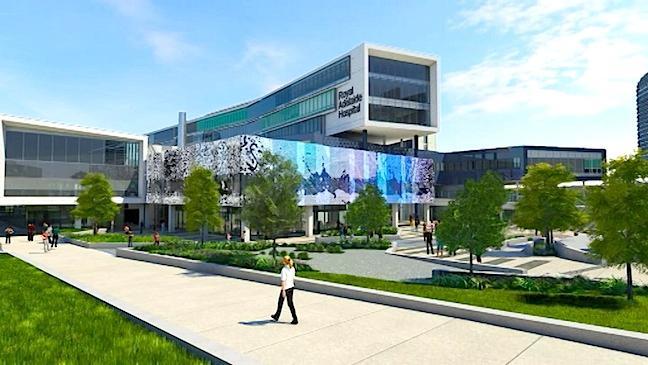
Being married to a fellow surgeon has its advantages. Dr Bauze says the pair supported each other through the pressures and long hours of intense training and, to this day, call on one another.
“It helps to have somebody who understands what you’re going through,” the former match-day doctor at Norwood Football Club says. “There’s not too many surgical couples out there.
“(Being a surgeon) is stressful, but it’s also very rewarding.”
There have been plenty of sacrifices too. Parents to two children — Ella, 12, and Henry, 9, Dr Fosh says she wasn’t always available to play mum.
“We had children during my (general surgeon) training,” she says. “It was all fairly intense. Training is 13 days on and then one day off and that day you’d study.
“I didn’t see an awful lot of (the kids) in the first few years (of training).”
The surgeon duo agrees changing lives is at the centre of what they do. Dr Fosh says she bonds with her patients as she often sees them regularly for the rest of their lives. “Not many of my patients forget they’ve had breast cancer, so you’ve always made a massive difference in their life,” she says.
“Both (jobs) are rewarding in their own different way,” Dr Bauze says. “It’s always about trying to do the best job every time.”
“Both (jobs) are rewarding in their own different way,” Dr Bauze says. “It’s always about trying to do the best job every time.”
Work on a $52.5 million upgrade of the Lyell McEwin Hospital will start in the middle of next year after the State Government announced in June it would build a new emergency department at the Elizabeth Vale hospital.
The number of assessment cubicles for adults and children would double, while resuscitation bays would also increase. A dedicated waiting area for children and parents will also be constructed in the emergency department.
The Modbury Hospital also receives a cash boost of $9.2 million. It will be spent building an eight-bed emergency extended care unit next to the hospital’s emergency department, with construction set to begin in 2018.
The unit — expected to create 30 full-time equivalent jobs — will allow dedicated clinicians to continue assessing patients who have been to the emergency department but require extra care.
It will mean a reduction in wait times at the ED and fewer hospital transfers.
Health Minister Jack Snelling said the unit would give residents “access to even better facilities” and provide them with extra emergency care services “on their doorstep”.
Rehab revival: The Queen Elizabeth Hospital
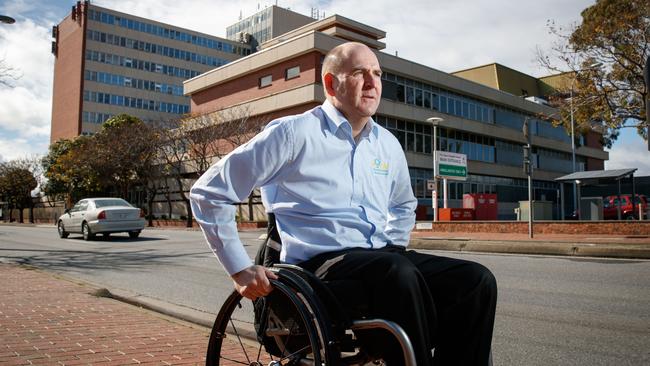
A split second changed Graham O’Neil’s life forever. The 24-year-old had just spent a day surfing at Victor Harbor and was driving back to Adelaide with a mate. But the road was wet — and tragedy struck.
“The last thing I remember is going around a bend and that was it,” he says. “We basically spun off the road in the wet and hit a tree, then I only remember waking up in hospital and being told I had a spinal cord injury and probably wouldn’t walk again.”
The crash happened in 1989. Mr O’Neil, who is now 52, recalls his short stay in hospital, followed by four months at the Hampstead Rehabilitation Centre, at Northfield, being taught how to move, take care of himself and live again.
Paralysed from the chest down, Mr O’Neil, of Hillcrest, didn’t let his injuries stop his life. After finishing rehab in December, he was back at work in January. But he says rehab took a heavy toll.
“Not only are you recovering from an injury, but you’re pretty well rebuilding your body as far as strength and endurance goes as well,” he says.
“The mental battle and the toll it takes on your family, everyone around that is supporting you, is really significant.”
“The mental battle and the toll it takes on your family, everyone around that is supporting you, is really significant.”
Rehab services at Hampstead will be moved to The Queen Elizabeth Hospital following the announcement of a $270 million upgrade at the hospital, which includes the state’s most advanced brain and spinal injury
rehabilitation service.
Leading disability organisation Paraquad SA has been campaigning for a state-of-the-art facility. “Spinal rehab in particular needs to be viewed with a special lens or focus because the outcomes are not simply like a typical health episode,” president Craig Clarke says. “If you’re not rehabbed properly, the level of comorbidity and the readmission rate can be significant.
“Additionally, spinal has never had, as far as I’m aware of, a purpose-built facility in South Australia. It has always taken over a previous facility that has been repurposed.”
SA Spinal Cord Injury Service medical director Associate Professor Dr Ruth Marshall says the new facility “meets our needs for the 21st century”. “This major investment will significantly boost our existing specialist rehabilitation services and secures The Queen Elizabeth Hospital as a leading-edge care provider within South Australia,” she says.
In addition to the new rehabilitation centre, the upgraded QEH will also feature a new, larger, state-of-the-art emergency department, more outpatient clinics, a new operating theatre and day surgery suite and a new medical imaging suite. Cardiac, cancer and respiratory services, previously set to move from the Woodville South hospital, will now stay at the QEH.
But Premier Jay Weatherill denied in June the Budget allocation was a backflip, saying it was “a change on what was proposed”.
Cardiac services are especially vital, given the ageing population in the western suburbs. The average age in the Charles Sturt Council district is 41, compared to 38 nationally, according to the 2016 census.
The stage three redevelopment of the hospital follows $139 million invested in the QEH since 2002. Work on the expansion would begin in early 2019 — a year after the next election — and support 780 full-time jobs. SA Health hopes the upgrade will result in increased emergency capacity with reduced waiting times, more health services closer to home for people in the western suburbs and faster access to elective surgery.
“The new development will allow patients to commence their rehab journey earlier in a facility, which meets their physical therapy needs and psychological requirements,” Dr Marshall says.
Grand farewell: Flinders Medical Centre
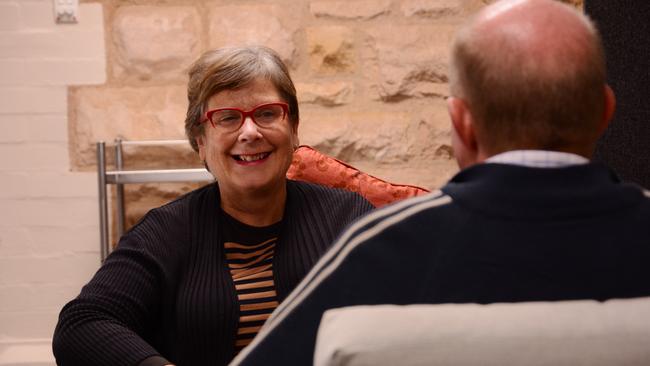
It is going to be an emotional affair when Daw House, or the Grand Old Lady as she is known, will be officially farewelled at the end of this month. The iconic building, adjacent to the Repatriation General Hospital on Goodwood Rd, has succoured and comforted the terminally ill and dying for three decades. She has touched families in Adelaide and beyond at a time when they hurt the most.
She stood by their side as they watched their loved ones pass on. She showed utmost respect. She listened and she hugged.
Daw House nurse unit manager Helen Walker says it is sad to see Daw House go but it is time to move on. “Of course, there’s sadness of saying farewell to the Grand Old Lady,” she says. “Daw House has served our palliative care community very, very well but it’s time to transition into an environment that’s going to be more suited to the work that we do. So, I think, you have to say that we’re a little bit excited about it.”
The Southern Adelaide Palliative Services will be relocated to the new rehabilitation building at Flinders Medical Centre as part of the State Government’s $185.5 million upgrade of the centre. The upgrade, currently under construction, also includes 1780-space multi-deck car park, dedicated orthogeriatric services and a new centre for the Older Persons’ Mental Health Service.
The Government has also announced it would spend an additional $6.5 million to add a further two operating theatres, increase surgical capacity, add about 12 new emergency bays and add a new paediatric resuscitation room.

Daw House was officially opened on August 1, 1988, just after the Kalyra Hospital, which included a 18-bed hospice, was closed. Ms Walker says sometimes up to four patients share a bathroom at the now ageing Daw House.
The purpose-built facilities at Flinders will include 15 private rooms, all with their own bathroom, and brand new beds and mattresses. They will also include a new community room with kitchen, allocated car parking spaces, and access to a rooftop terrace, rehab facilities, including a swimming pool, and other medical services, such as radiology. “There are many people who come to us, not just to die, but for symptom management, some time before they die,” Ms Walker says. “For them to have access to all that backup service is really important.”
Ms Walker, who has been working in palliative care for about 20 years, says the work is highly rewarding. But she says it takes a certain person to enjoy the job.
“People call us angels. We’re not angels but we’re people who care about people,” she says.
She says staff use a biopsychosocial model, a holistic form of care, that ensures the patient is being treated as a person and the family is being cared for as a unit. It’s a model that resonates with the community. “People speak very highly of our services, but we’re always looking to improve,” Ms Walker says. “We don’t sit on our hands.”
The same care methods and staff, including doctors, nurses, support workers and volunteers, will move to the new facilities at Flinders. Ms Walkers says it is important to deliver the same services.
“We’re going into an environment that is purpose-built for the needs of our patients and are very, very committed to maintaining the therapeutic feel that we have now,” she says.
“Our model of care is the same. Our volunteers will be with us and care for our patients and families at this important time of their lives. We will be providing a very, very good and important service up at Flinders and we very much look forward to an improved amenity for everybody.”
Daw House will be officially farewelled at a ceremony, including a symbolic transition, on August 27. Ms Walker says: “We’re taking the veteran spirit with us.”
The Government’s total investment in the Flinders Medical Centre since 2002 now stands at $385 million. It included the construction of a new south wing building and a new cardiac care unit.
New zest of life: Noarlunga Hospital
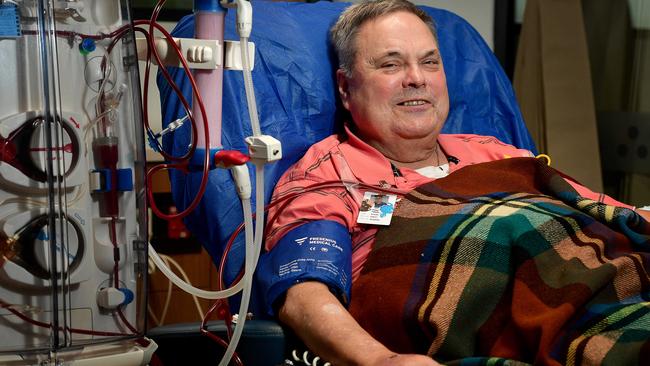
Philip Fabian’s life revolves around dialysis treatment. Three times a week, a volunteer car picks him up from his Morphett Vale home and drives him to Noarlunga Hospital.
After setting him up with the right equipment, he is hooked up to a machine that takes five hours to do the work of his failed kidneys.
It is a necessary evil, but Mr Fabian refuses to let it quash his zest for life. “As soon as you’re off dialysis, you’re dead in two weeks,” Mr Fabian says. “But I’m fine at the moment, things are going quite well. Life is precious, you’ve got to hold on as best you can.”
Dialysis has been his life support for the past six years after type 2 diabetes caused his kidneys to fail. He has spent the past four years at Noarlunga Hospital, only visiting Flinders Medical Centre for check-ups and emergencies. Mr Fabian, 66, says the nurses are “like family now”.
“It’s more social than you’d realise — I’m a talker so we’re always chatting”
“It’s more social than you’d realise — I’m a talker so we’re always chatting,” he says.
The experience has become a more comfortable one in the past year since the new dialysis unit opened in April 2016 as part of a $12 million upgrade of the hospital. It includes nine new renal dialysis chairs, a waiting area, bathroom facilities and personal storage spaces for patients. Mr Fabian says the new unit is “brilliant” in comparison to the previous one, which was getting “old and tired”. “We’ve got windows — we didn’t have windows at the other place,” Mr Fabian says. “It’s nice, especially when you’re sitting there that long. We had to go out into the corridor for the toilet, too, which was really a nuisance because you have to have your needles still in.”
Mr Fabian says the upgrade makes a big difference to those who rely on the unit’s lifesaving services. The hospital has undergone a string of changes as part of the State Government’s Transforming Health initiative. It has become the elective day surgery hub of the south with two new operating theatres being built, an improved paediatric space in the emergency department and an expansion of the first and second stage recovery areas.
The operating theatres were the last upgrades to be unveiled in May. Southern Adelaide Local Health Network chief executive Professor Michael O’Keefe says Noarlunga Hospital will specialise in public elective day and 23-hour surgery, aged care and mental health services for people in the south. “There are now six procedural areas at Noarlunga Hospital, which will boost the number of surgeries performed each day.”
Noarlunga’s community emergency department will continue to operate 24 hours a day, seven days a week, but Flinders Medical Centre remains the major hospital for the south. It will take care of complex and specialised surgeries, including trauma and emergency surgery.
SA Ambulance Service
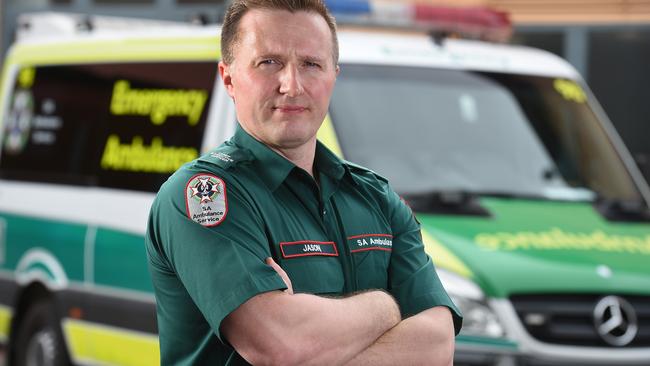
A house with horse stables in Adelaide’s western suburbs will soon be turned into the city’s latest ambulance station to keep up with the rising demand for the service.
The station, to be built opposite Morphettville Racecourse on Morphett Rd, Glengowrie, is part of a $16 million SA Government boost to the service that will see the ambulance expand significantly.
It also includes a multimillion-dollar station that will be built in the heart of Adelaide’s northern suburbs at Parafield Airport, on Lockheed Lane.
SA Ambulance Service chief executive Jason Killens says the expansions are significant. “This is a significant investment in the health care system,” he says. “In South Australia, we have some of the best ambulance clinicians in the world, and we are arming them with world-class equipment and the best facilities.”
The new station at the Morphett Rd site will include staff accommodation, training rooms, a carpark and a garage for seven ambulances and two light vehicles.
Site preparation works will begin soon, with construction on the new station due to start in October ahead of the station’s expected completion late next year.
Health Minister Jack Snelling says the station’s location would provide easy access to the new Royal Adelaide Hospital, The Queen Elizabeth Hospital and Flinders Medical Centre.
“This state-of the-art ambulance station is the latest example of the State Government’s ongoing commitment to deliver the highest quality care for all South Australians”
“This state-of the-art ambulance station is the latest example of the State Government’s ongoing commitment to deliver the highest quality care for all South Australians,” he says.
The station in the north will also include modern staff accommodation, training facilities, fully-fitted staff kitchen and modern amenities such as shower facilities.
The new station will garage up to 13 ambulances and five light vehicles. It will have capacity for 54 staff carparks, including two disabled car parks.
Construction on the new station is expected to start in early 2018, with completion expected later that year.
In addition, a new $12 million rescue and retrieval aviation base is being built at Adelaide Airport, providing an all-encompassing hub for emergency medical retrieval services.
Construction is due to be completed by the end of this year.
Ambulances take on an even more important role as hospital emergency services have been realigned under the Government’s Transforming Health reform.
SA Ambulance Service has launched a recruitment campaign to attract 72 staff, including more than 60 paramedics, created under the government reform.
The investment will also see an extra 12 ambulances added to the fleet.
Country health
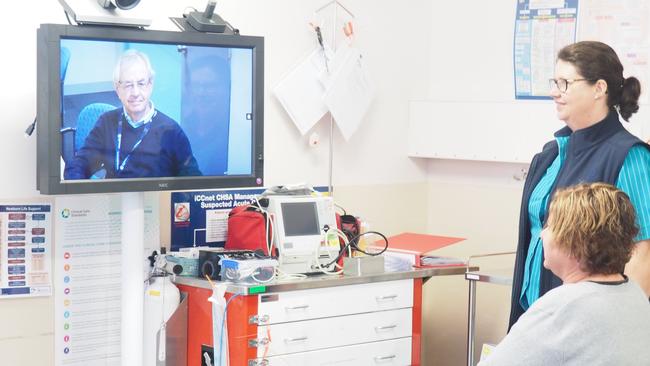
Telehealth technology could soon be used to bring health care specialists and doctors virtually into the homes of rural South Australians. SA Health has already invested more than $7 million in the past six years into delivering telehealth services from more than 100 health sites across SA.
The department is now focusing on using the technology for in-home services where it is “clinically appropriate”. “Telehealth is fundamentally changing how we deliver services,” Country Health SA director of medical services Professor Paul Worley says. “It complements our high-quality local services by allowing us to see patients more quickly and provide timely advice when a patient is based in a regional or remote location. Telehealth services also provide additional support to our staff working in rural and regional areas.”
Telehealth consultations are conducted via a videoconferencing network, installed in more than 100 health sites across SA.
The network is used to deliver a range of services, including mental health, cancer services, cardiology, burns support, renal services, rehabilitation services, allied health services, pain assessment, prison health, spinal assessment, emergency retrieval and after-hours GP support for emergency departments.
The number of assessments has risen from 5300 in 2015 to 7000 last year, when more than 24,000 video conferences were held.
The investment in telehealth is hoped to take a burden off the new RAH and other metropolitan hospitals where a large number of rural patients stay.
Professor Worley says SA Health continues to invest in the technology to improve the outcomes for country patients.
“Using telehealth, we can complement the high-quality local clinical care for patients”
“Using telehealth, we can complement the high-quality local clinical care for patients by enabling consultation with a metropolitan specialist when clinically appropriate, without the need to travel long distances,” he says. “This can be a great reassurance for both patients and clinicians, and gives back days of travel time to country families.”
The SA Government announced a record investment in health infrastructure in the 2017/18 State Budget, including $16.9 million for the modernisation of suburban hospitals.
The Mount Barker District Soldiers’ Memorial Hospital received $800,000 for a 24-hour on-site emergency doctor. However, of about 82 hospitals and health services outside of Adelaide, no other provider received funding. Country patients account for about 16 per cent of overnight admissions in metropolitan hospitals, including 24 per cent at the RAH. “Our largest regional hospital is the new Royal Adelaide Hospital,” treasurer Tom Koutsantonis says.
“That’s the biggest hospital and where most emergencies are dealt with. That’s where we’ll invest most.”
